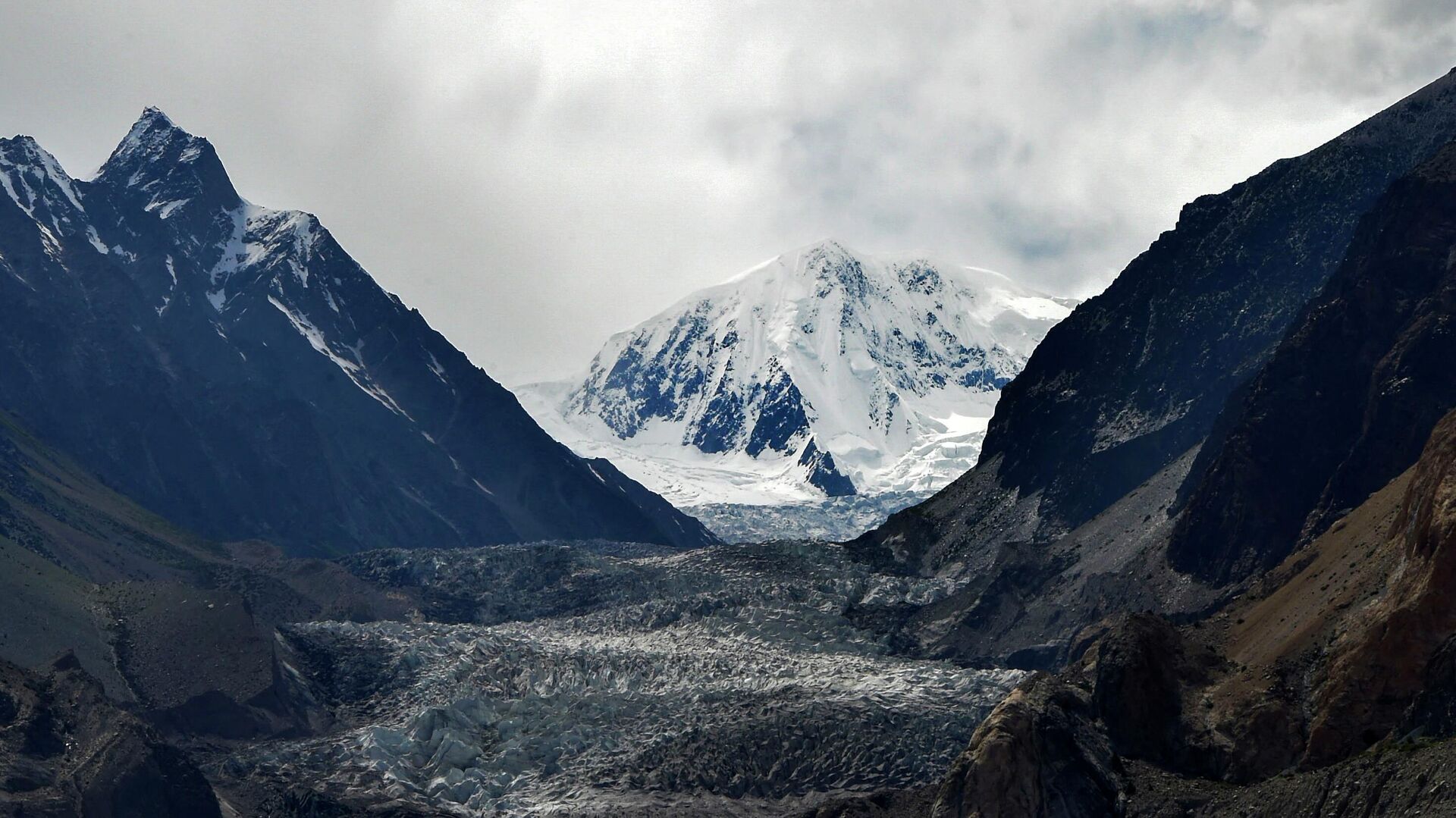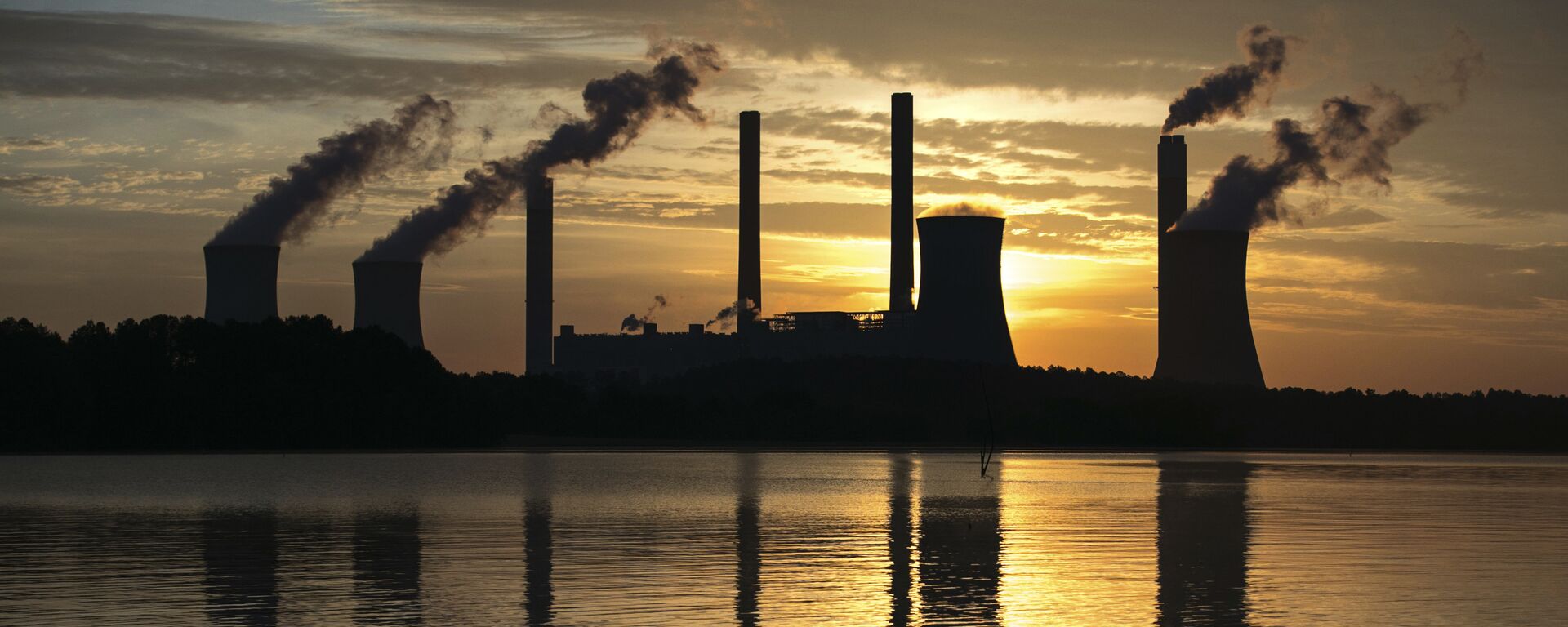https://sputnikglobe.com/20221122/melting-glaciers-are-releasing-tonnes-of-bacteria-into-rivers-and-streams-study-reveals-1104564469.html
Melting Glaciers Are Releasing Tonnes of Bacteria Into Rivers and Streams, Study Reveals
Melting Glaciers Are Releasing Tonnes of Bacteria Into Rivers and Streams, Study Reveals
Sputnik International
Potentially harmful pathogens and other thousands of microbes could leak into rivers and lakes as the glaciers melt from human-caused climate change. As the... 22.11.2022, Sputnik International
2022-11-22T23:56+0000
2022-11-22T23:56+0000
2023-04-21T10:42+0000
science & tech
glacier
study
microbes
https://cdn1.img.sputnikglobe.com/img/07e6/0a/0d/1101811252_0:153:2941:1807_1920x0_80_0_0_956816f8990e7c7408affd9eb8fe25c0.jpg
A new study has revealed that tonnes of bacteria are being released by melting glacier ice surfaces in our Northern Hemisphere. How this will impact our ecosystem requires further study, but it could increase the amount of carbon produced by the tens of thousands."Globally there are 200,000 catchments of note that are fed by glacial meltwater and some of these are very sensitive environments that are poorly developed in terms of organic carbon and nutrients,” said Edwards.As the microbes are flushed downstream there is a possibility that they could fertilize the ecosystems they come into contact with, the researchers said, but whether or not any of these are pathogens (a microbe with the ability to cause a disease) remains unknown. And a more hopeful outcome as a result of these microbes could be the potential for new antibiotics. Still, what kind of microbes they are remains unknown. But one thing is for certain: scientists predict that the glacial runoffs from 10 sites across the Northern Hemisphere will release more than 100,000 tonnes of bacteria over the next 80 years.The figure is the equivalent to 650,000 tonnes of carbon being released into rivers, lakes, fjords and oceans a year, all depending on how fast the glaciers melt, and whether or not humans are able to curb climate change."The number of microbes released depends closely on how quickly the glaciers melt, and therefore how much we continue to warm the planet. But the mass of microbes released is vast even with moderate warming," Edwards added.The process of glacial melting is somewhat self-acting too, as the glaciers melt, the microbes within them will increase the heating process by releasing pigments they use to protect themselves from sun damage, thus increasing the warming process and destroying their own habitat.Scientists for this study compiled their research using samples of meltwater from four glaciers in the European Alps, as well as glaciers in Canada, Sweden, Svalbard, and the western Greenland ice sheet.The findings were published in the Nature Communications Earth and Environment journal.
https://sputnikglobe.com/20220712/us-liable-for-2-trillion-in-damage-to-global-economy-via-climate-change-driven-pollution---study-1097244257.html
Sputnik International
feedback@sputniknews.com
+74956456601
MIA „Rossiya Segodnya“
2022
News
en_EN
Sputnik International
feedback@sputniknews.com
+74956456601
MIA „Rossiya Segodnya“
Sputnik International
feedback@sputniknews.com
+74956456601
MIA „Rossiya Segodnya“
science & tech, glacier, study, microbes
science & tech, glacier, study, microbes
Melting Glaciers Are Releasing Tonnes of Bacteria Into Rivers and Streams, Study Reveals
23:56 GMT 22.11.2022 (Updated: 10:42 GMT 21.04.2023) Potentially harmful pathogens and other thousands of microbes could leak into rivers and lakes as the glaciers melt from human-caused climate change. As the bacteria and algae melt off of the glacier’s surface an average of 650,000 tonnes of carbon could be released into the northern hemisphere per year.
A new study has revealed that tonnes of bacteria are being released by melting glacier ice surfaces in our Northern Hemisphere. How this will impact our ecosystem requires further study, but it could increase the amount of carbon produced by the tens of thousands.
"We think of glaciers as a huge store of frozen water but the key lesson from this research is that they are also ecosystems in their own right," said Arwyn
Edwards, microbiologist and study author of Aberystwyth University in the UK.
"Globally there are 200,000 catchments of note that are fed by glacial meltwater and some of these are very sensitive environments that are poorly developed in terms of organic carbon and nutrients,” said Edwards.
As the microbes are flushed downstream there is a possibility that they could fertilize the ecosystems they come into contact with, the researchers said, but whether or not any of these are pathogens (a microbe with the ability to cause a disease) remains unknown. And a more hopeful outcome as a result of these microbes could be the potential for new antibiotics. Still, what kind of microbes they are remains unknown.
“We don’t have enough data to understand the value and the threat of these organisms. I routinely get inquiries about whether there is going to be a doomsday pathogen melting out of the glaciers. I think that’s a very minor risk, but it’s not a zero risk, so we need risk assessment of these microbes,” said Edwards.
But one thing is for certain: scientists predict that the glacial runoffs from 10 sites across the Northern Hemisphere will release more than 100,000 tonnes of bacteria over the next 80 years.
The figure is the equivalent to
650,000 tonnes of carbon being released into rivers, lakes, fjords and oceans a year, all depending on how fast the glaciers melt, and whether or not humans are able to curb climate change.
"The number of microbes released depends closely on how quickly the glaciers melt, and therefore how much we continue to warm the planet. But the mass of microbes released is vast even with moderate warming," Edwards added.
The process of glacial melting is somewhat self-acting too, as the glaciers melt, the microbes within them will increase the heating process by releasing pigments they use to protect themselves from sun damage, thus increasing the warming process and destroying their own habitat.
Scientists for this study compiled their research using samples of meltwater from four glaciers in the European Alps, as well as glaciers in Canada, Sweden, Svalbard, and the western Greenland ice sheet.
The findings were published in the Nature Communications Earth and Environment
journal.

